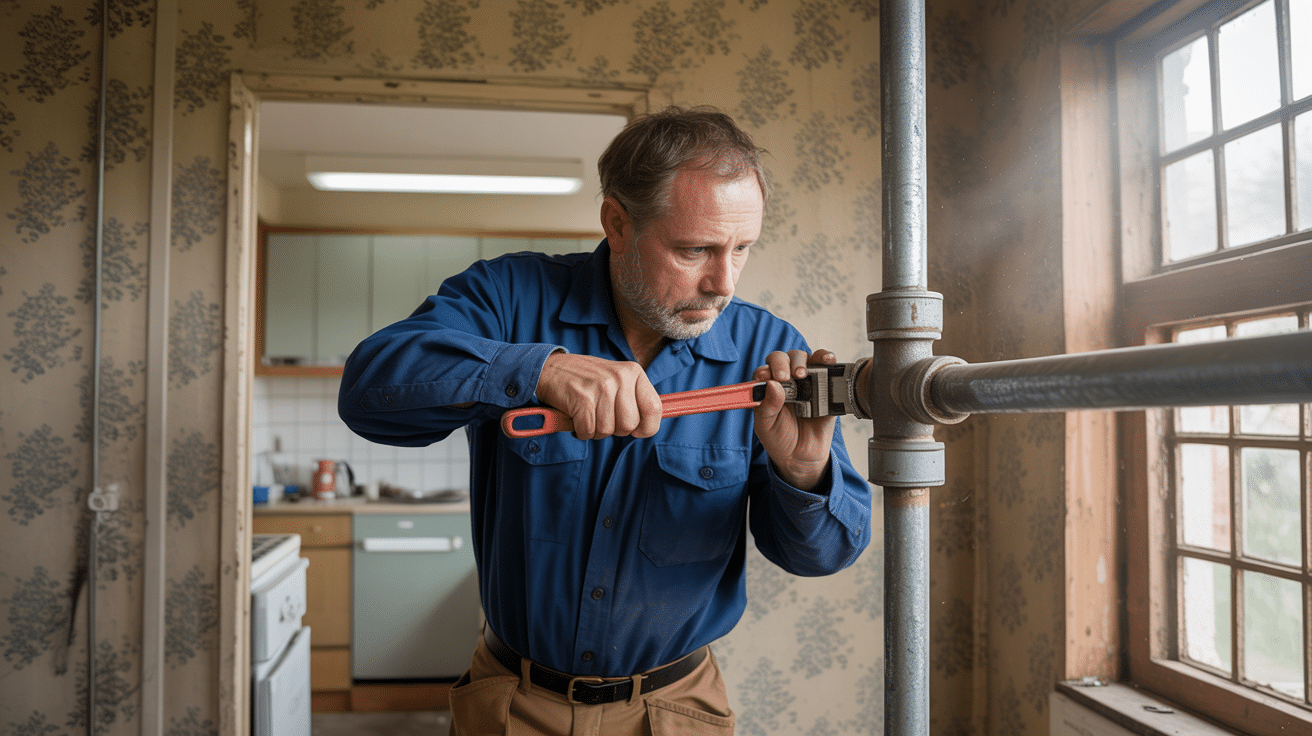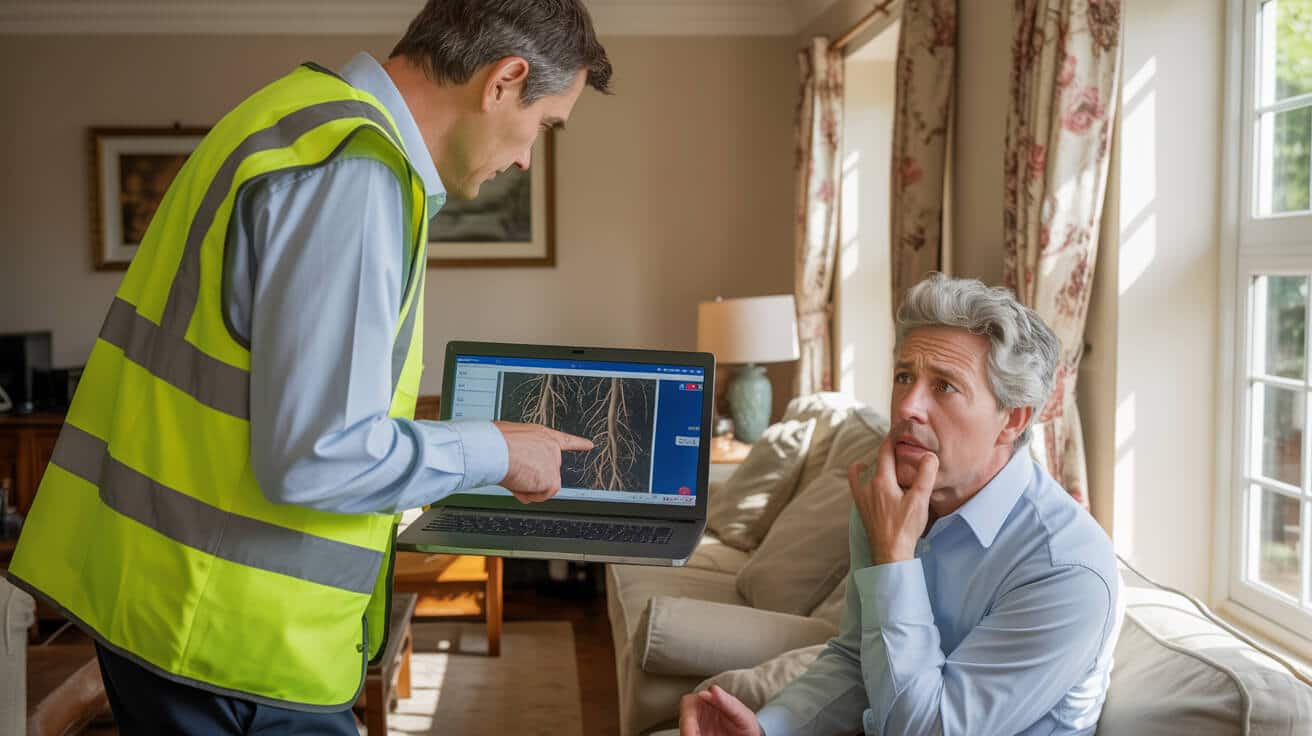 Why Is My Radiator Cold at The Bottom
Why Is My Radiator Cold at The Bottom

Why Does a Radiator Get Cold at the Bottom—And Why Should You Care?
You feel the difference as soon as you enter the room: warm up top, cold by your feet, thick socks doing heavy lifting while your heating system quietly chews through cash. A radiator that’s toasty at the top but stone-cold at the bottom isn’t just “underperforming”—it’s a warning signal of deeper issues in your system, with repercussions that stretch from your monthly bills to your long-term property value, and for professionals, even compliance risks.
Every cold-bottom radiator quietly erodes comfort and value—waiting only makes the problem bigger.
If you’re a homeowner, landlord, letting agent or facilities manager, addressing a cold-bottom radiator isn’t just about feeling warmer. It’s about stripping out inefficiencies, protecting assets, and proving proactive stewardship—exactly what stakeholders and insurers look for. Understanding the true cause is the first step to locking in real results and gaining a narrative of reliability your peers recognise.
Hot at the Top, Cold at the Base—What the Pattern Reveals
When the bottom of a radiator stays cold even while the top is piping hot (and the system’s up to temperature), your problem nearly always stems from something physical preventing proper flow—most often, a slow-building layer of “sludge” that’s settled out over time. This isn’t mere guesswork: according to UK property maintenance surveys, over 80% of cold-bottom radiator issues are traced directly to corrosion byproducts, scale, or related debris[BestHeating.com, 2024; Checkatrade.com, 2024].
That soft patch at your feet? It’s less about a ‘faulty radiator’ and more about heat that simply can’t get where it’s needed because something is blocking its path. The longer the issue is ignored, the more energy your boiler burns for diminishing comfort—and the more likely you’ll fall foul of compliance checks or tenant complaints.
Who Should Be Concerned?
- Homeowners: Consistent warmth is linked to low-stress living and desirable EPC scores.
- Landlords: Cold rads = rising complaints, higher repair costs, and insurance headaches.
- Letting agents & portfolio managers: Reliable heating and clean documentation are pivotal for client retention and compliance.
- Commercial and local authority teams: One persistent ‘cold patch’ can escalate to a multi-system failure if responsibility for routine checks is unclear.
Heating systems don’t just fail—they decline in silence. Don’t let quiet inefficiency sneak up on your property.
What Actually Causes the Cold-Bottom Radiator Problem—And Why Now?

Sludge is the main villain, but not the only suspect. Over months or years, metal pipes corrode, water leaves mineral deposits, and particles settle, forming a dense, dark sediment right where heat flow matters most—the bottom of your radiators.
Four Core Causes of Cold-Bottom Radiators
- Sludge & Corrosion Debris:
This is a mix of rust flakes, mineral scale, and leftover installation dirt caught in the base of radiators. Sludge blocks internal passages, forming a thermal barrier that hot water cannot penetrate. - Neglected Chemical Maintenance:
If corrosion inhibitor wasn’t topped up during your last plumbing visit, or your system’s been drained down a few times without fresh chemicals, metals react fast with oxygen and minerals—especially in hard water areas—accelerating build-up. - Valve or Flow Control Faults:
Sticking thermostatic radiator valves (TRVs), lockshields set too low, or software glitches in smart controls can restrict water circulation at the exact points that feed the bottom of the radiator. - Post-Installation Imbalance or Air-Trapping:
If your system was never properly balanced, or if air is stuck (rarely at the bottom, but possible with complex circuit layouts), radiators farthest from the boiler or poorly piped zones develop cold spots.
Ignoring a single centimetre of sludge can sap 30% of your radiator’s output—wasting both energy and time. *(BestHeating.com, 2024)*
Often, it’s a combination: old pipes shedding debris, lapses in maintenance, and a stuck valve. What you experience is heat at the top (because hot water rises as best it can), and a surprising chill at floor level.
Why These Issues Catch Out Even Diligent Owners or Agents
- Sludge formation is insidious: You may check and bleed radiators regularly, but unless chemical dosing and periodic flushing are part of your plan, debris will build up year on year.
- Hard water regions are high risk: Scale from mineral-rich water speeds up corrosion and deposit formation.
- Post-work surprises: Renovations or pipework jobs where ‘system cleanse’ was overlooked leave flux, filings, or rubber—perfect seeds for heating sludge.
Smart property teams now view annual inhibitor dosing and scheduled flushes as cost prevention, not ‘optional extras’—a strategic investment that head off complaints and builds a documented trail of care.
How Can You Tell If It’s Sludge, Air, or a Valve Problem?
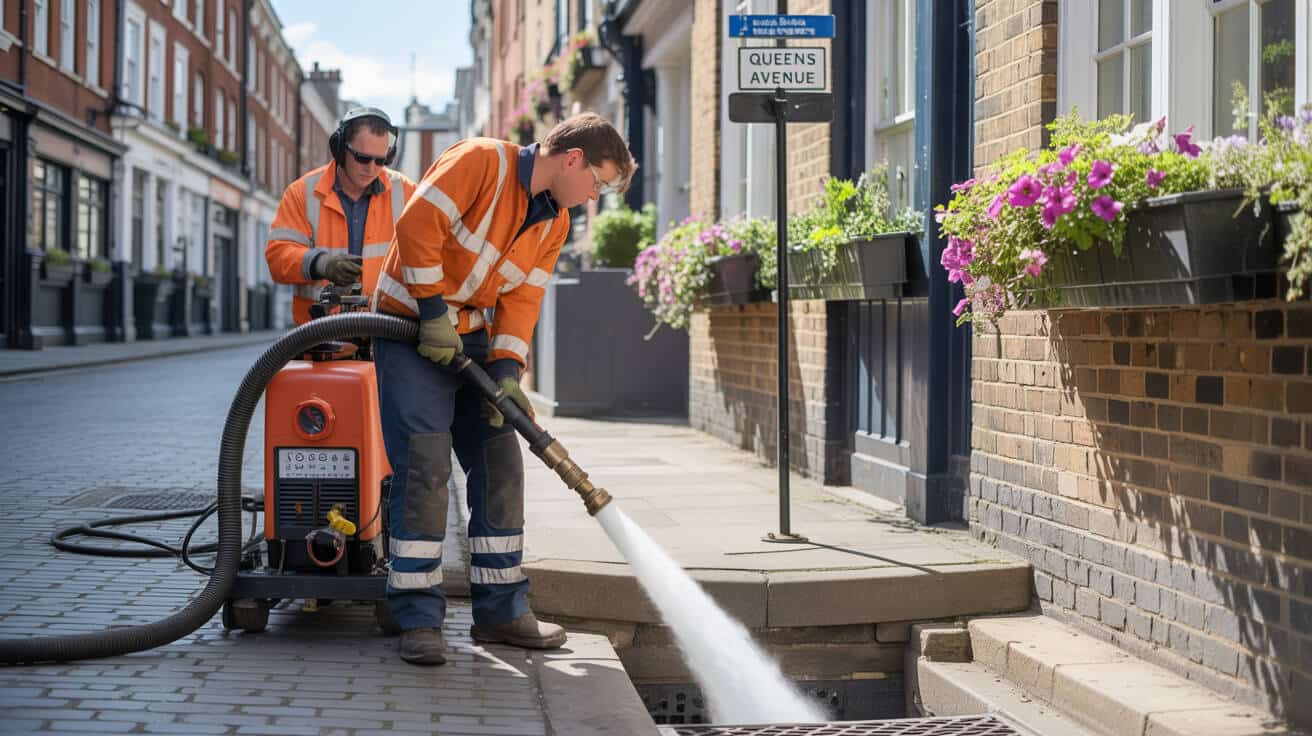
Acting on the wrong diagnosis wastes time and money. Bleeding radiators is always the fastest first test, but real improvement depends on recognising the true culprit.
The Fast Diagnostic Playbook
- Cold at the top, warm at the bottom: Classic case of *trapped air.* Bleeding usually restores full warmth.
- Hot at the top, cold at the bottom: Telltale sign of *sludge* or restricted flow—bleeding alone won’t help.
- Discoloured water when bleeding: Brown or black means corrosion; clear water means air or possibly a mis-set valve.
- Multiple radiators affected: System-wide sludge or poor balancing, not just a valve on one radiator.
- Visible rust, deposits, or stains at joints: Corrosion has made it to the metal surface—inside will look worse.
Professionals often confirm with test equipment—thermal imaging pinpoints blockages, and pressure drops across valves reveal flow restrictions.
Most cold-bottom cases need a flush, not a bleed. The real fix is deeper than what you can reach with a radiator key.
Letting agents and landlords: If tenants call repeatedly about ‘cold spots’, take it as a sign to request a system inspection and service—not just another air bleed.
How Do Valve, Stat, and Balancing Issues Cause or Mimic Cold Spots?
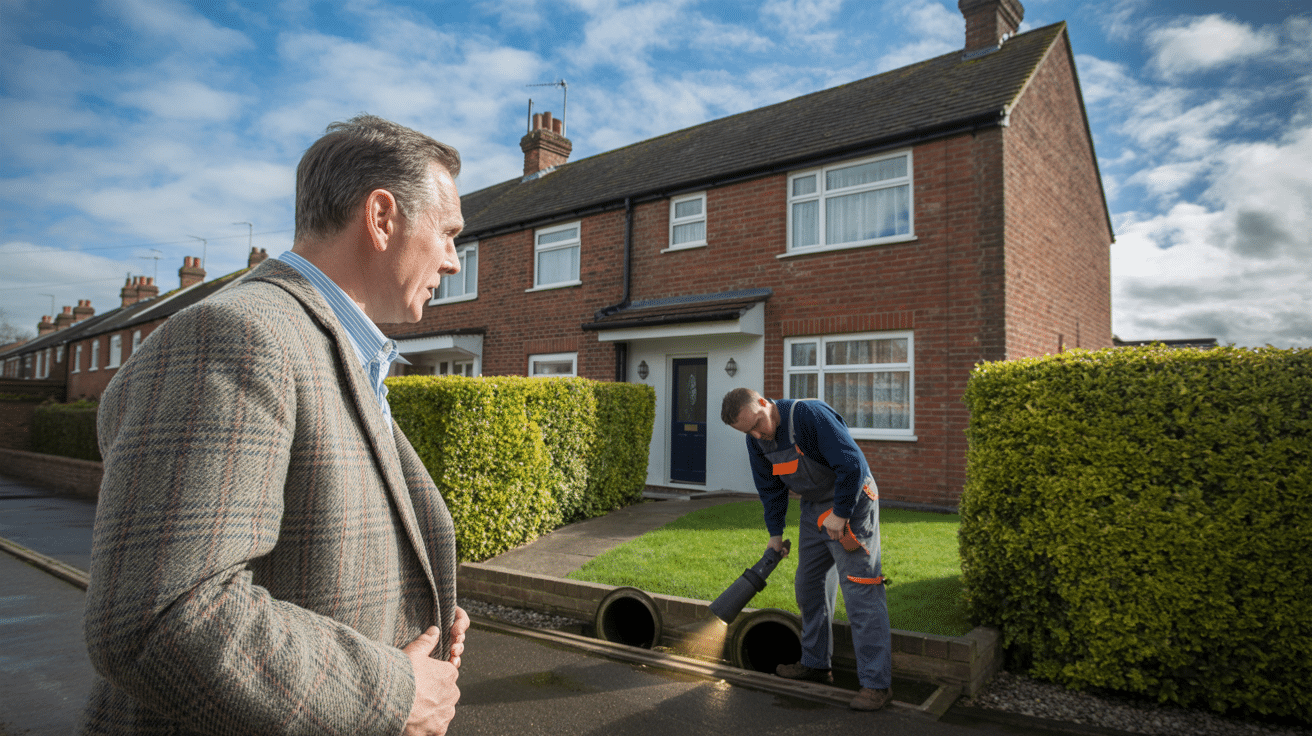
Even the best-maintained heating system can be tripped up by something as mundane as a mis-set or failed valve.
Control Points to Check Before Escalating
- TRVs (Thermostatic Radiator Valves): A stuck, jammed, or partially closed TRV will restrict flow, producing lower heat at the bottom.
- Lockshield valves: These obscure little controls (opposite end from the TRV) should be just open enough for balanced flow; too tight, and only the radiator top may heat.
- Smart or programmable stats: If schedules collide after power cuts or WiFi drops, certain radiators may get toned-down flow, producing cold bases despite the system running.
- System balancing: New homes, post-renovation systems, or buildings with extensions often need rebalancing. Failure to do so sends maximum flow to the nearest radiators and starves those on distant runs.
Industry data puts blame on control issues for up to 70% of minor cold-bottom cases (RadiatorOutlet.co.uk, 2024). For portfolio managers and agents, including basic valve checks on maintenance rounds saves countless winter callouts.
DIY Diagnostic Sequence
- Check each radiator valve is fully open and spins freely.
- Re-bleed radiators after verifying boiler pressure (should read 1.0–1.5 bar cold).
- Verify system timers, zones, and thermostats haven’t conflicted after events like power cuts or battery swaps.
- Observe—does the pattern affect just one radiator or many?
It’s often the quarter-turn you missed, not the £1,000 repair, that brings warmth back.
If you’ve checked all the above and radiators remain cold at the bottom, you’re looking at a cleaning job—DIY chemicals for new systems, professional flush for older or multiple-rad symptoms.
Is Power Flushing Worth It—Or Just a ‘Last Resort’?
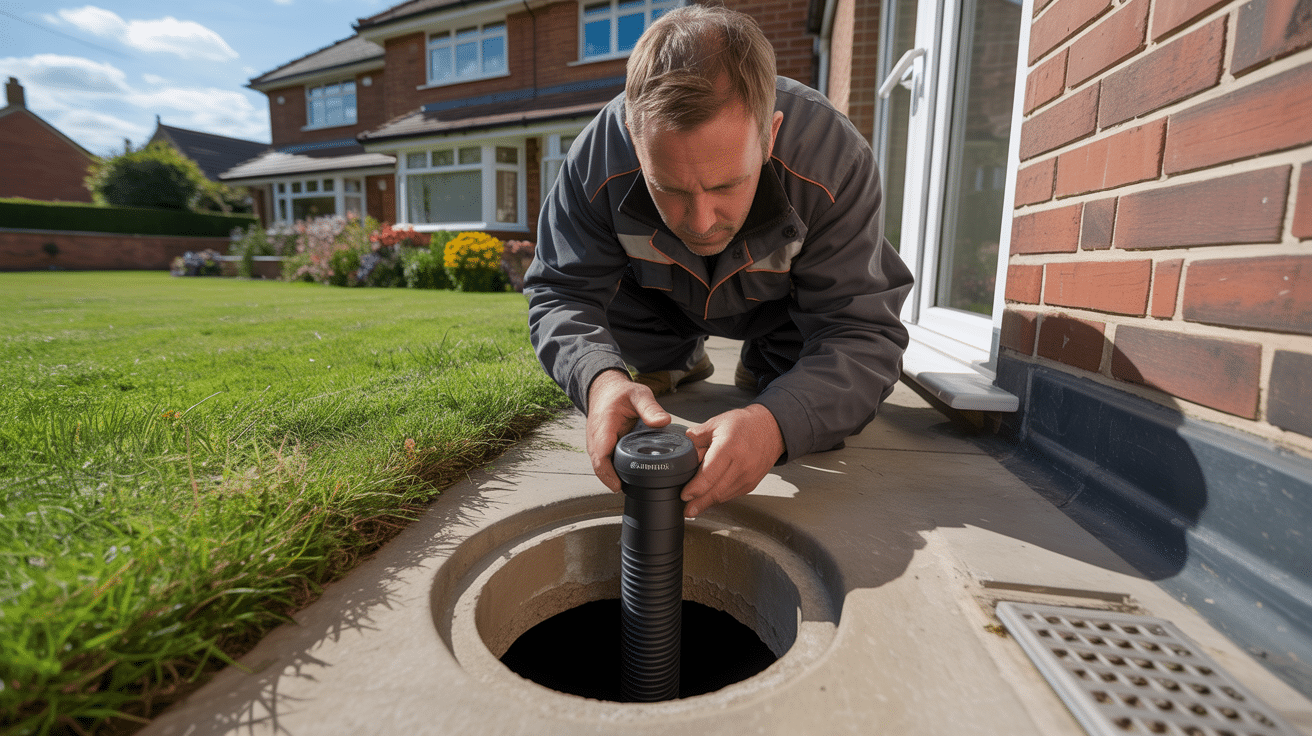
Power flushing sounds dramatic, but when done right, it’s one of the most effective ways to restore full, even heat for the long haul. The process itself is about more than pressure: it’s controlled agitation, smart chemistry, and strict documentation.
What Happens in a Proper Power Flush?
- Preparation: Engineer isolates, drains, and pressure-tests your system. Powerful pump and magnetic philtre connect at the most effective junction (often the radiator nearest the boiler for central flow).
- Dosing: Commercial cleaning chemicals circulate, breaking down sludge and scale, with water alternately flushed forward and backward for maximum reach.
- Filtration: As the debris breaks free, magnets and microfilters trap particles before they reach sensitive parts (pumps, valves, plate exchangers).
- Verification: Clean water is run until it’s clear. Engineer checks all rads and records digital evidence where requested (common for lettings, landlords).
- Protection: Fresh corrosion inhibitor is dosed into the system; balancing is re-checked; clients get a printed or digital job sheet for their files.
The results are dramatic: Properly flushed systems regularly see up to 90% output recovery on affected radiators—plus lower bills and longer boiler life (BestHeating.com, 2024).
DIY vs. Professional Flush
- DIY chemical kits: can shift light deposits in newer (<5yrs) systems where you’re confident sludge hasn’t spread widely—always read safety guidance.
- Full power flush: Older systems, multiple radiators affected, or recurring brown water mean professional services (like Plumbers 4U offer) are the main route. Only registered/certified engineers can carry out pressure and chemical work that meets WRAS/Gas Safe expectations.
A professional flush now costs much less than years of wasted gas, repeated breakdowns, or tenant churn.
Can You Prevent Sludge Recurrence (and Protect System Compliance)?
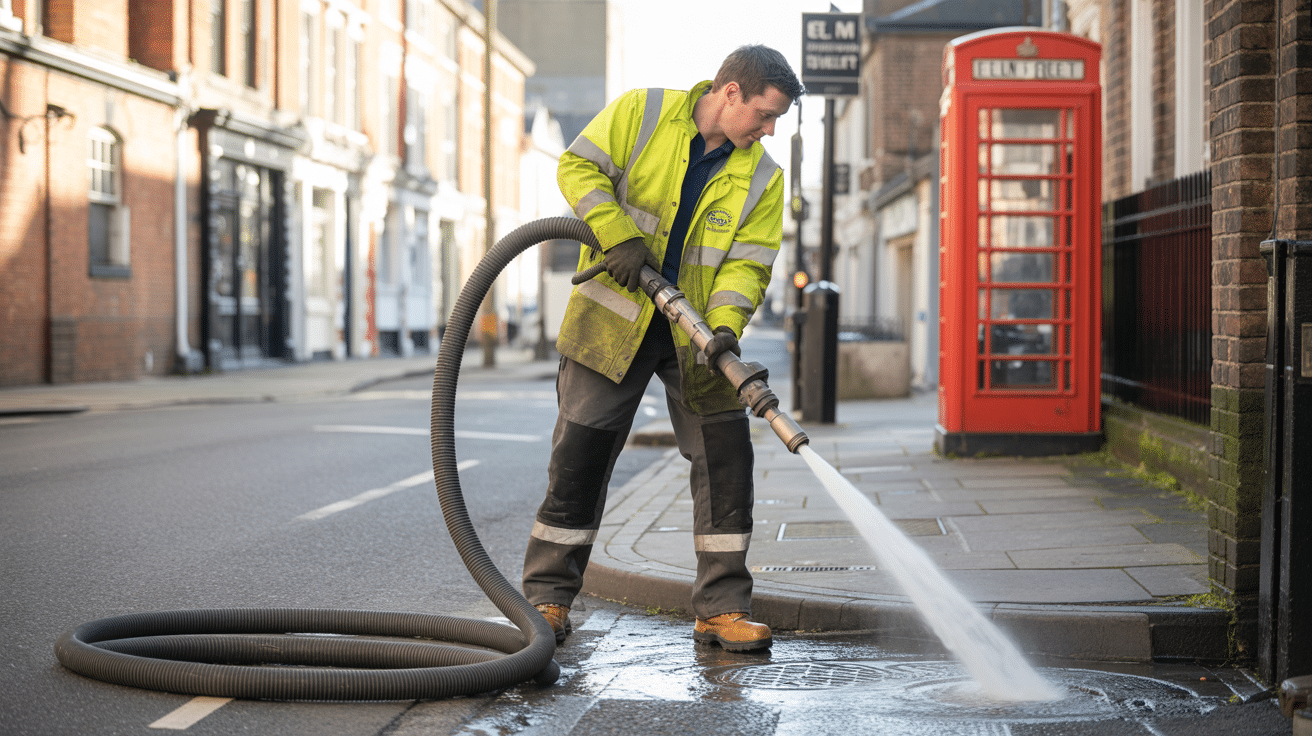
The best outcome? You only ever worry about radiator warmth once. The modern heating system is built to work silently, efficiently, and to code—but only if maintained with the right steps.
Pro-Level Prevention—Worth Doing Right
- Annual corrosion inhibitor top-up: Every drain-down or flush needs a new dose. Modern inhibitors cut sludge risk up to 80% and are required under BS7593:2019.
- Magnetic philtre fitted at boiler return: These simple units are now WRAS standard on new builds—trapping metallic debris before it can settle in radiators. Quick to instal, cheap to service.
- Scheduled system health checks: Every engineer’s visit (for gas certs, EPC checks, or annual boiler service) should include a quick scan of inhibitor levels, philtre cleaning, and a review of the job log.
- Proper documentation: For landlords, managing agents, and commercial clients—system cleaning and treatment (with chemicals and parts listed) is as important as the fix. Even insurance and EPC assessments now ask for these records in case of claim or audit.
The Compliance Edge—Why Good Records Aren’t Just ‘Nice to Have’
- Landlords now need fit-for-purpose heating to comply with MEES, CP12, and Part L energy regs.
- Agents and commercial teams face mounting pressure for well-maintained systems in block management and for void risk minimisation with tenants.
- Homeowners who document services can improve resale values and speed up “home info pack” compliance.
A system that’s protected, photo-logged, and has a clear paper trail is a no-surprises asset: cost-controlled, complaint-resistant, and attractive to buyers, insurers, and regulators.
The best systems are boring. When you do the little things well, heating just works, and paperwork paves the way for value.
Step-By-Step: What Can You Safely Check or Fix Before Calling an Engineer?
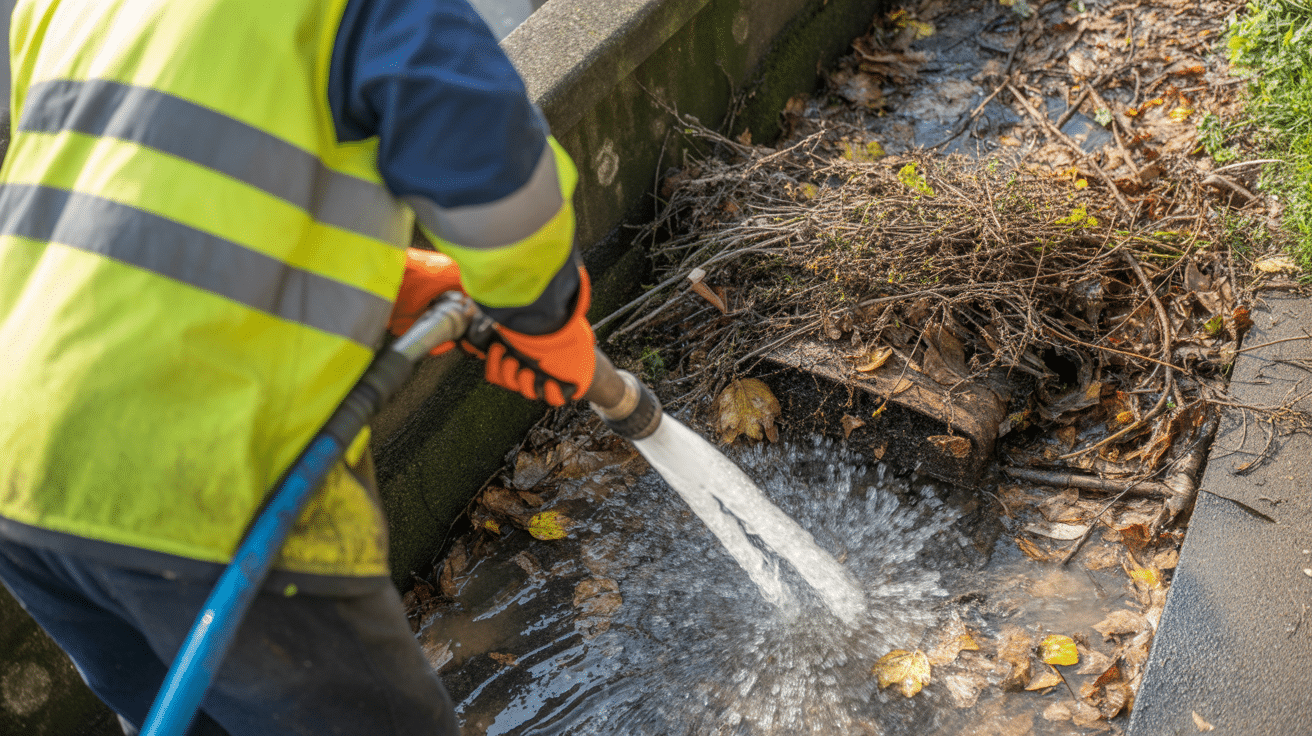
Many issues are beyond the safe reach of DIY, but property owners and agents can quickly rule out the basics before booking a visit.
Quick Homeowner or Agent Pre-Check
- Bleed each radiator in turn:
Open the bleed valve (use a cloth and tray for water) until you hear a consistent flow. If water pours out but it’s cold at the base, bleeding won’t help. - Check both radiator valves (TRV and lockshield):
Make sure neither is seized and both are open just enough for strong circulation (fully open as a test). - Examine boiler pressure:
Most sealed systems need 1.0–1.5 bar when cold. Adjust with the filling loop or call for advice if unsure. - Test heating zones and controllers:
Make sure thermostats, programmers, and zones haven’t desynchronised after power outages. - Monitor after adjustments:
If the same cold-bottom returns after a few days, or several radiators share symptoms, escalate to a system-level professional flush and analysis.
A single round of basic checks can save hours of downtime and hundreds in unneeded callouts. Small, regular ritual—massive long-term payback.
Landlord and Letting Agent Tips
Many include the above steps in check-in packs for tenants—clear instructions, sample diagrams, and even branded video links.
If in doubt, especially for portfolio properties, always default to scheduled professional checks with a clear reporting line. You’ll stay compliant, keep tenants and owners happy, and reduce the risk of unexpected major works during peak winter months.
When Are Cold-Bottom Radiators a Signal for System Upgrade or Full Overhaul?
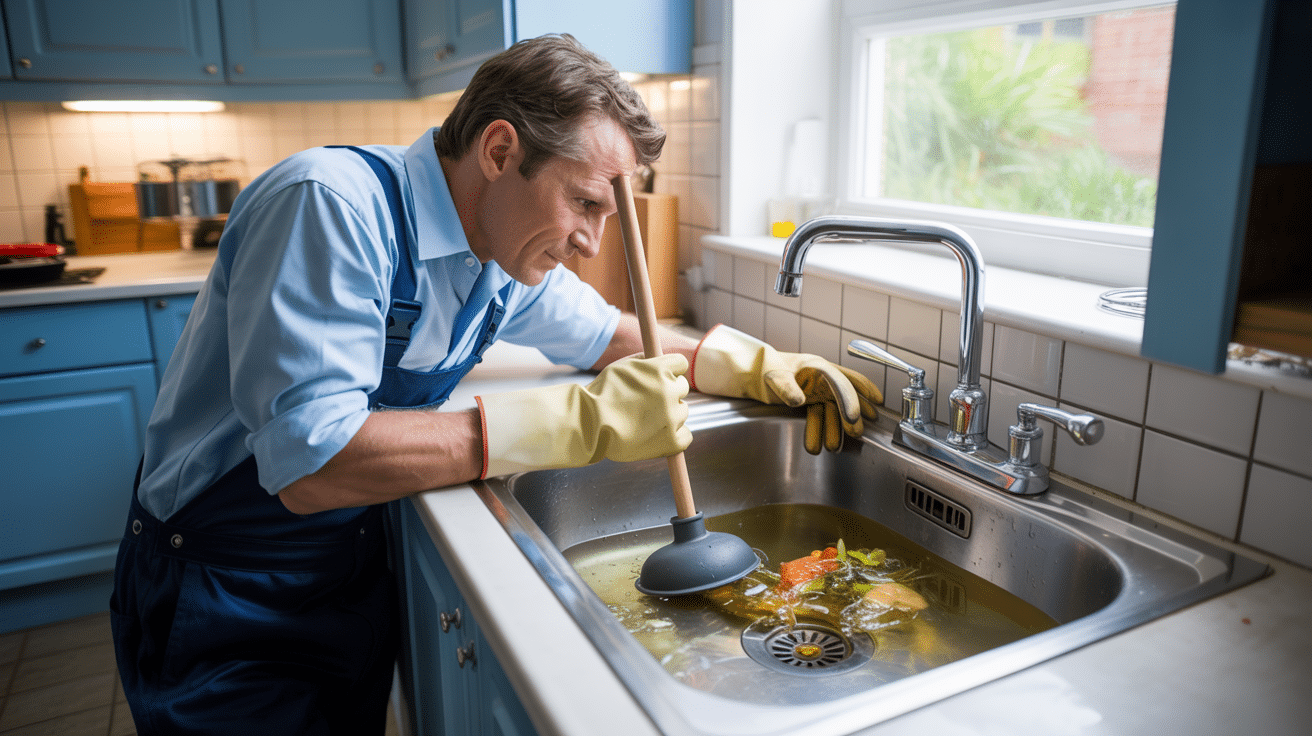
Sometimes problems keep coming back, even after ‘every fix in the book’. Here, it’s time to consider deeper strategies—not just for comfort, but for your compliance and asset value.
Red Flags That Point to a Broader Issue
- Multiple system failures per year: If cold spots return after every service, underlying system weaknesses remain.
- Poor or missing compliance documentation: EPC, CP12, WRAS treatment, and insurance claims increasingly require proof of annual maintenance and upgrades.
- Outdated or incompatible components: Some older radiators, boilers, or pipework materials (like single-feed iron or lead) no longer meet regulatory guidance (Part L, BS6700) and act as persistent sludge magnets.
- No magnetic philtre fitted: Without this, even the best-maintained systems refill with fresh metal debris after every repair or drain-down.
- Boiler and cylinder mismatch: Converting to unvented or combi systems can resolve centuries-old flow issues, especially in higher-risk buildings like HMOs or multi-storey conversions.
Cold-bottom radiators aren’t an annoyance—they’re an opportunity to modernise, reduce risk, and demonstrate leadership in property care.
In these scenarios, consult a registered, WRAS/Gas Safe/WaterSafe engineer for a system survey, recommendations, and a written plan.
Maintenance Contracts: The Commercial and Portfolio Manager’s Edge
For landlords, agents, and business leaders, moving to a scheduled, photo-logged service contract is a shortcut to less friction, effortless audit trails, and tenants who stay put. The difference shows up fast—in winter calls, complaint logs, and compliance reviews.
The Strategic Difference: Plumbers 4U Method—Why It Works
When you bring in Plumbers 4U, you’re not just buying a fix—you get an engineer who won’t settle for a patch job or “see how it goes.”
Our Approach Instead?
- Root-cause diagnostics: We pressure-check, thermal scan, and run flow tests to ensure blockages aren’t masked by air or valve tweaks.
- System-wide documentation: Every callout comes with a written job sheet—parts, chemicals, test readings, before/after photos, and compliant disposal of debris.
- WRAS, WaterSafe, and Gas Safe compliance: All work meets regulated standards, supporting insurance and landlord audits.
- Full client walkthrough: Before leaving, we demo stopcock, thermostats, and pressure points—equipping you, your tenants, or your staff to spot future issues early.
- Warranty and EPC support: Aftercare advice, periodic reminders, and evidence you can file with legal and insurance teams.
Property owners who can prove consistent care and compliance run fewer risks, see lower bills, and gain a logbook anyone—client or stakeholder—can trust.
Hundreds of clients, from single-homeowners to block managers and commercial lets, trust us to help defend against cold spots, compliance disputes, and silent inefficiencies.
Book Your Compliance-Proven Radiator & System Health Check
Every season you wait, the cost goes up—on bills, comfort, and peace of mind. Cold-bottom radiators are never a one-off or an accident. They signal a smart time to take action, protecting everyone’s interests—and proving your reputation as a leader who handles the little things before they become the next media headline.
Plumbers 4U gives you:
- Transparent, fixed-price quotes up front—no hidden extras, ever.
- Only WRAS, WaterSafe, and Gas Safe certified techs—so you’re always audit- and regulation-ready.
- System-wide solutions, not bandaid repairs—comprehensive, photo-documented, and signed off for insurance and EPC needs.
- Preventative, not reactive, support—so you control costs and downtime before they control you.
Leadership is protecting your property before it shouts for help. Reputation is built in the details.
Ready to restore full warmth, proven compliance, and peace of mind? Book your heating check with Plumbers 4U now—and turn every cold bottom into a badge of care.
Frequently Asked Questions
What causes the bottom of a radiator to stay cold when the top is hot, and why does it matter for property owners?
When you notice the top of your radiator heating but the bottom staying cold, what’s happening inside is remarkably specific: sludge—fine particles of rust, limescale, and settled debris—is building up in the lower section. Over time, water and metal naturally react, letting minerals and oxygen bind and sink down, forming a dense layer that blocks warm water from circulating fully through the radiator.
This isn’t just a matter of comfort. Industry research ties over half of uneven heating complaints to sludge, not faulty valves or air. The real problem is energy leaks out of your system: your boiler has to work longer to raise room temperature, gas bills creep up silently, and the lifespan of your central heating drops. For landlords, letting agents, or anyone managing compliance, a cold-bottom radiator can quietly tip an EPC rating or cause excess wear—potentially triggering insurance or warranty issues if left unaddressed.
Neglected sludge doesn’t just steal warmth—it quietly eats into your operating budget and exposes compliance gaps.
Modern radiators in both homes and managed properties are at risk after any major works, or if the system hasn’t had annual water treatment. As these deposits accumulate, the issue spreads: other radiators begin running cold, pipes can block, or boilers start displaying low efficiency codes.
How can you spot the warning signs early?
- Only one radiator shows uneven heating, but symptoms spread over time if ignored.
- Bleeding the radiator removes some air but doesn’t fix a persistently cold base.
- A black or brown tint in the drained water signals metal and limescale sediment.
- If you manage multiple systems, track heating patterns—clusters of cold spots often indicate a growing system-wide problem.
Step in now, and you prevent a small local blockage from snowballing into major property disruption.
Which checks quickly distinguish between sludge, trapped air, or a stuck valve in your radiator?
You can diagnose the cause of an unevenly heating radiator with a logical, stepwise approach:
- Bleed and listen: Open your radiator’s bleed valve after 20–30 minutes of running. If air hisses out and the entire radiator soon heats, air was at fault. If water starts running but the base stays cold, debris is involved.
- Check the valves: Thermostatic and lockshield valves must both turn freely. A stuck valve can mimic blockage, but freeing it up often results in fast, full warmth.
- Physical tapping: Gently tap along the bottom panel. A dull, padded response usually points to settled sludge. A sharp ring means the path is clear.
Modern engineers use heat-mapping cameras and water clarity tests to pinpoint blockages invisible to the naked eye—these tools are especially handy for larger estates or commercial assets, where small cold spots can mask bigger distribution problems (CIPHE, 2022).
Getting this step right saves days of guesswork and unnecessary bleeding—use evidence over trial and error.
When is a professional diagnostic a must?
- Bleeding and valve checks make no improvement.
- Water drained runs cloudy, brown or black.
- Several radiators behave the same way, especially after a repair or refill.
- Manual tests aren’t conclusive or there’s ongoing system pressure loss.
Proper diagnosis prevents wasted resource and ensures any intervention matches both compliance expectations and real needs.
What is the most effective way to fix a cold-bottom radiator, and when should you call an engineer?
If the symptoms are limited to one radiator, careful DIY can often restore your heat. Here’s a fail-safe process:
- Switch off the heating and let the radiator fully cool.
- Close both valves (thermostatic and lockshield) at each end to isolate.
- Place towels and a tub underneath, then slowly open the bleed screw to release any trapped water.
- Detach the radiator and move it outside.
- Flush thoroughly with a hose until only clear water runs from both ends.
- Refit the radiator, open both valves, repressurise the system if needed, and bleed to remove any remaining air.
If two or more radiators show the same issue—or if you see repeated blockages, persistent pressure drops, or very dark water flow—full-system cleaning becomes necessary. Powerflushing requires high-pressure pumps and controlled chemicals: legally, only certified G3/WRAS engineers must handle this, especially for landlords or agents keeping property documentation (BS7593:2019).
A hands-on flush fixes single radiators—system-wide sludge is a job for engineers with the gear and paperwork.
When is it safer to book a professional than go DIY?
| Symptom | DIY Flush Possible | Engineer Needed |
|---|---|---|
| Only one radiator blocked | ✔️ | |
| Several radiators with cold base | ✔️ | |
| Loss of system pressure | ✔️ | |
| Unvented or sealed system involved | ✔️ |
Cross the DIY line at your own risk: compliance, warranties, and flooding issues all demand professional handling when systems go beyond a local fault.
When is a powerflush essential, and what alternatives exist for tackling radiator cold spots?
A full-system powerflush is not always needed. This intensive, high-flow chemical clean is reserved for cases where:
- More than one radiator stays cold at the base after standard maintenance.
- Discoloured, black, or brown water flows out during draining or bleeding.
- The same cold spot or pressure loss keeps recurring within six months.
- EPC paperwork, insurance, or landlord law now requires a cleaning record.
In a powerflush, engineers connect professional pumps and micro-philtre systems, dose approved chemicals, and monitor process parameters—logging every step for compliance. Commercial and managed buildings nearly always need formal proof of cleaning to meet WRAS or BS7593 requirements.
For mild blockages, alternatives work: targeted single-radiator flushes, fitting magnetic philtres to trap new debris, or balancing radiators after any major system work. The proof is in clearwater returns and consistent heating over subsequent months.
Powerflushing is your compliance and operational insurance policy—especially for asset managers and rental property owners.
What are the early-stage alternatives?
- Only one radiator: try a direct hose flush and see if symptoms resolve.
- Immediately fit a magnetic philtre after any system work to reduce future debris risk.
- Rebalance radiators and top up inhibitors—sometimes, small tweaks solve a lot.
If fixes don’t last, the cost of escalation is lower than damaged boilers or lost compliance rating later on.
What proven maintenance and system upgrades keep radiators heating evenly year after year?
With compliance on the rise and utility costs spiking, proactive maintenance isn’t just sensible—it’s required for most managed properties and portfolios.
- Annually renew the inhibitor: Each drain or refill needs a top-up to prevent corrosion. Skipping this step is now a compliance breach for some landlords (BS7593:2019).
- Instal and maintain magnetic philtres: Trapping iron and sludge protects every appliance downstream. After heavy debris events, philtres must be emptied and checked six-monthly.
- Routine engineer visits: An accredited plumber will check inhibitor levels, water clarity, and provide records to satisfy EPC or letting requirements.
- Rebalance your system: After changes—like new installation or pipework—balance radiators to avoid some “starved” ends collecting most debris.
Consistent documentation doesn’t just tick compliance boxes—it protects against insurance refusal and unlocks lower heating costs.
Best practice checklist for ongoing system health
- Top up and test inhibitor every 12 months.
- Clean or replace magnetic philtres as needed.
- Log every flush, chemical dose, and intervention—store paperwork for insurers.
- Schedule annual reviews, not just emergency visits.
- Balance radiators after any plumbing changes or property refit.
Take the maintenance path, and you’re not just buying warmth—you’re securing audit-proof compliance and stable, predictable bills season after season.
How does Plumbers 4U set the standard for even heating, legal security, and landlord peace of mind?
Choosing Plumbers 4U is a risk-reducing move. Here’s why leading homeowners, landlords, and agents trust our process:
- Diagnose before doing: Our engineers use temperature mapping, system water sampling, and calibrated valve checks, not “just a quick bleed.” This means we fix the real problem upfront.
- Document every step: From chemical doses to philtre types and flush dates, our records are WRAS- and EPC-ready, streamlining every future audit or compliance query.
- Set fixed expectations: You see total costs and scope in advance; no up-selling and no hidden fees. This levels the field for landlords and agents managing several assets.
- Aftercare anchored in real support: You get before/after photo logs, sensible user instructions, seasonal maintenance reminders, and direct line support for future queries.
- Protect compliance reputation: Every intervention comes with paperwork for insurers or letting audits, and proactive checks that prevent both the sudden bills and legal headaches that frighten agents and owners.
Properly maintained systems grant you both comfort and control—the backbone of asset protection and daily peace of mind.
Don’t let heating headaches or silent cold spots sabotage your building’s value, insurance, or home comfort. Make Plumbers 4U your partner for reliable warmth, clear records, and a reputation for zero-hassle compliance.

